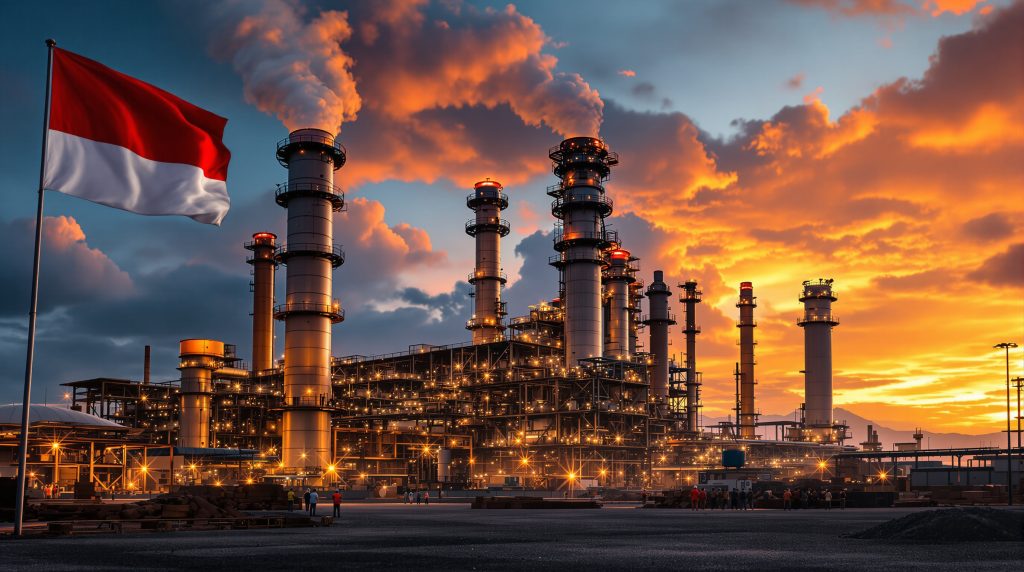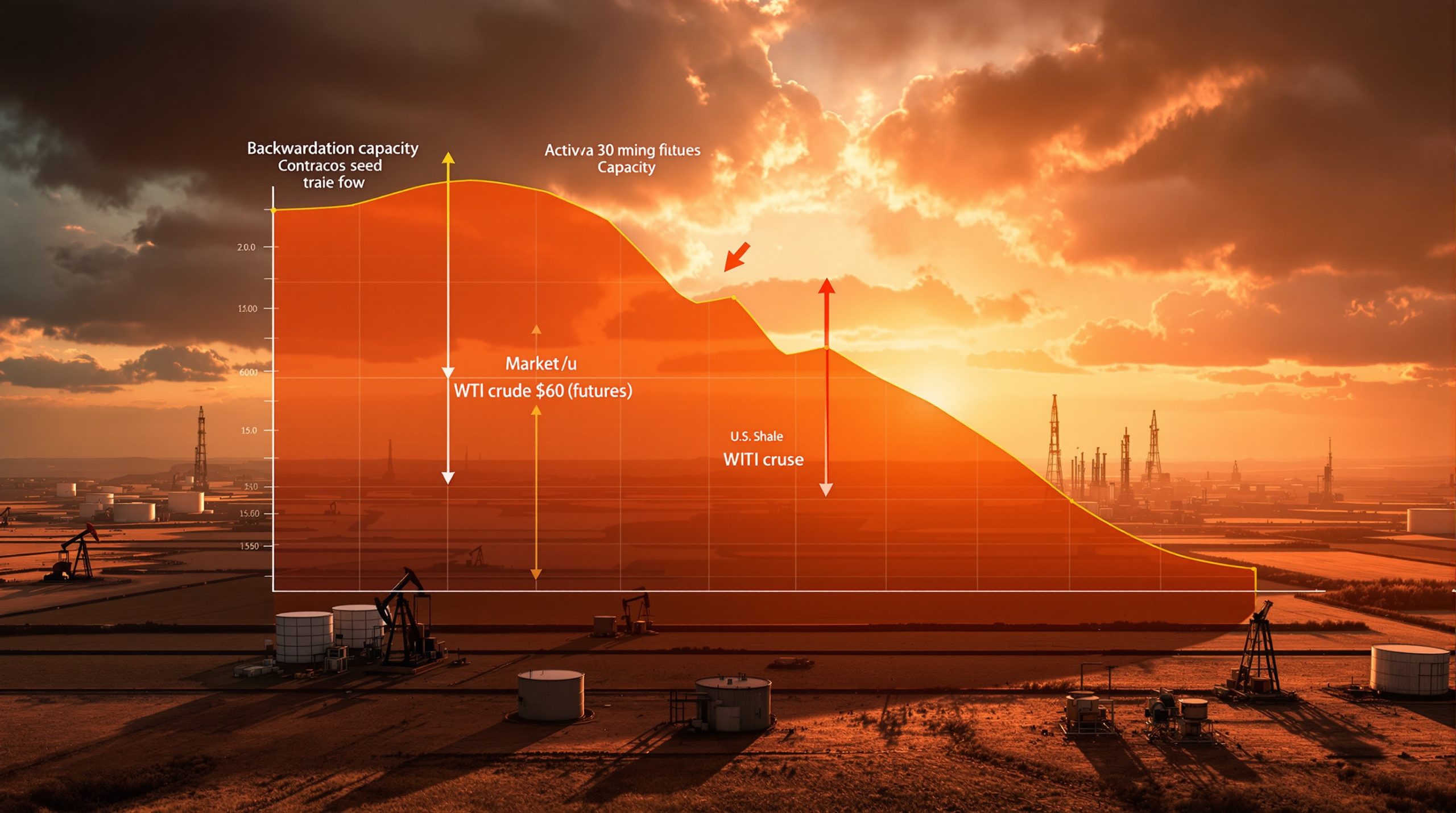Supply Woes Threaten Freeport Indonesia's Manyar Smelter Operations
The $3.7 billion Manyar copper smelter in East Java faces an imminent operational crisis that could force a complete shutdown by late October 2025. This sophisticated processing facility, a cornerstone of Indonesia's mineral value-addition strategy, is confronting a critical copper concentrate shortage stemming from a catastrophic mud-flow incident at Freeport Indonesia's Grasberg mine in Papua.
Mining ministry official Tri Winarno confirmed the severity of the situation, noting that supply problems Freeport Indonesia Manyar smelter will likely be exacerbated as copper concentrate supplies from Grasberg will be depleted by month's end, necessitating a temporary suspension of smelter operations. This represents the latest in a series of operational challenges for the Manyar facility, which only resumed production in May 2025 after recovering from a significant fire incident in October 2024.
Understanding the Grasberg Mine Disaster
The mud-flow catastrophe at Grasberg claimed seven workers' lives and has completely halted mining operations for nearly a month. The disaster's scale has been substantial enough that company representatives have indicated the mine may not return to pre-accident production rates until at least 2027, creating a prolonged two-year recovery period.
The Grasberg complex, recognized as one of the world's premier copper and gold mining operations, represents Indonesia's mining crown jewel. Its operational disruption creates ripple effects far beyond the immediate mining site, affecting downstream processing capabilities and Indonesia's broader economic interests in the mining sector.
Mud-Flow Incidents in Mining Operations
Mud-flow events in mining operations typically occur when saturated materials mobilize unexpectedly, sometimes triggered by excessive rainfall, improper water management, or structural failures in containment systems. These incidents can cause catastrophic damage to mine infrastructure while posing severe risks to personnel and equipment.
The extended recovery timeline projected by Freeport Indonesia suggests that the Grasberg incident likely damaged critical mining infrastructure requiring substantial rebuilding efforts. While specific technical details about the mud-flow event remain limited in public disclosures, the projected two-year recovery period indicates extensive remediation requirements.
Manyar Smelter's Troubled Operational History
Since its completion, the Manyar smelter has faced significant operational hurdles that have limited its ability to achieve stable production. The facility's operational timeline reveals a pattern of disruptions that raise concerns about the project's long-term viability.
Key Operational Milestones and Setbacks
- October 2024: A substantial fire damaged critical plant infrastructure, forcing a complete operational shutdown
- May 2025: Operations resumed after approximately seven months of extensive repairs and restoration
- September 2025: Grasberg mine mud-flow incident disrupts concentrate supply chain
- October 2025: Facing imminent operational suspension due to concentrate shortage
The pattern of disruptions is particularly concerning considering the substantial $3.7 billion capital investment in the facility. With only approximately five months of continuous operation between its May 2025 restart and the October 2025 supply crisis, the smelter has had limited opportunity to achieve operational stability or financial returns.
Economic Implications of the Shutdown
The potential shutdown carries significant economic consequences across multiple stakeholders, from direct operational impacts to broader policy implications for Indonesia's resource development strategy.
Financial Impact Analysis
The $3.7 billion capital investment in the Manyar facility makes any operational disruption financially significant. While specific revenue impacts remain undisclosed, the repeated operational disruptions create serious concerns about return on investment timelines and overall project economics.
Beyond direct operational costs, extended downtime affects:
- Revenue generation for Freeport Indonesia
- Employment stability at the processing facility
- Government tax revenue from processed copper products
- Downstream industries relying on consistent copper cathode supply
Indonesia's Downstream Processing Ambitions
The situation represents a significant setback for Indonesia's aggressive mineral processing ambitions. The country has implemented policies requiring domestic processing of mineral resources rather than exporting raw materials, aiming to capture more value within its borders.
The Manyar smelter stands as a flagship project within this broader value-addition strategy. Its operational struggles highlight the challenges in rapidly developing sophisticated processing capabilities, particularly when upstream supply chains face disruptions.
Global Copper Market Implications
The combined disruptions at both Grasberg mine and the Manyar smelter will reverberate through global copper supply chains, potentially influencing market dynamics through 2025 and beyond.
Supply Chain Disruption Analysis
Grasberg's position as one of the world's largest copper producers means its operational suspension creates meaningful supply constraints. The mine typically produces substantial copper concentrate volumes that enter global supply channels either directly or through processing at facilities like Manyar.
The smelter disruption further compounds market impacts by reducing refined copper cathode production capacity at a time when rising copper demand remains robust, driven by energy transition investments and infrastructure development.
Price Dynamics and Market Response
Copper market analysts will likely monitor the situation closely, as prolonged disruption at both Grasberg and Manyar could provide price support for copper in late 2025 and into 2026. The market may need to adjust to both:
- Reduced concentrate availability affecting smelters globally
- Lower refined copper cathode output directly from the Manyar facility
These dual supply constraints could be particularly significant if the recovery timeline extends as currently projected through 2027, creating a multi-year adjustment period for market participants. According to recent copper price predictions, such supply disruptions could further strain an already tight market.
Mitigation Strategies and Recovery Options
Freeport Indonesia faces difficult choices in addressing the concentrate shortage, with several potential approaches to navigate the crisis.
Alternative Supply Sourcing Possibilities
The most direct mitigation would involve securing alternative copper concentrate supplies from other mining operations globally. However, this approach faces substantial challenges:
- Logistical complexity: Arranging transportation and handling for bulk concentrate shipments
- Quality matching: Ensuring alternative concentrates match processing parameters for Manyar
- Contract availability: Securing spot market volumes in a tight concentrate market
- Economic viability: Managing potentially higher costs for alternative supplies
Operational Adaptations
The company might implement temporary operational adjustments to extend available concentrate supplies, such as:
- Running the smelter at reduced capacity to stretch existing concentrate inventories
- Implementing selective processing schedules with periodic operational pauses
- Focusing on highest-value processing activities during supply constraints
- Accelerating maintenance activities during low-throughput periods
Regulatory Engagement
Working with Indonesian authorities on regulatory flexibility during the crisis period could provide breathing room for longer-term solutions. This might include:
- Temporary adjustments to domestic processing requirements
- Customs and permit facilitation for alternative concentrate imports
- Coordination on workforce management during reduced operations
- Development of joint recovery planning between government and company
Policy Implications for Indonesia's Resource Strategy
The Manyar situation tests Indonesia's aggressive downstream processing requirements and highlights potential vulnerabilities in the country's approach to resource nationalism.
Balancing Ambition with Operational Realities
The crisis demonstrates the inherent challenges in rapidly developing sophisticated processing infrastructure, particularly when:
- Upstream supply sources face disruption risks
- Technical expertise for complex facilities remains in development
- The infrastructure supporting integrated operations needs further development
- Market dynamics create economic pressures on processing operations
Indonesian policymakers may need to consider more flexible approaches that account for operational disruptions while still advancing long-term value-addition goals. This could include phased implementation timelines, contingency provisions for supply disruptions, or greater flexibility in how domestic processing requirements are structured.
Recovery Timeline and Outlook
Based on current assessments, stakeholders face a prolonged period of uncertainty and adjusted operations.
Near-Term Projection
The Manyar smelter faces an imminent operational pause beginning in late October 2025. While characterized as "temporary" by officials, the duration remains uncertain, contingent primarily on:
- Successful implementation of alternative supply strategies
- Incremental restoration of Grasberg mine production
- Potential technical adjustments at the smelter facility
- Regulatory accommodations during the recovery period
Long-Range Recovery Assessment
| Timeline | Projected Development | Confidence Level |
|---|---|---|
| October 2025 | Manyar operational suspension | High |
| Q4 2025 – Q1 2026 | Limited/intermittent operations | Medium |
| 2026 | Partial recovery with alternative supplies | Medium-Low |
| 2027 | Return to steady-state operations | Low |
Company statements indicating Grasberg may not return to pre-accident production levels until at least 2027 suggest the Manyar smelter could face extended periods of reduced throughput or intermittent operations over the next two years, further complicating the global copper supply forecast.
Strategic Considerations for Stakeholders
The situation presents different strategic challenges for various stakeholders in Indonesia's copper value chain.
For Freeport Indonesia
The company must balance immediate operational concerns with long-term strategic positioning, particularly:
- Maintaining relationships with Indonesian authorities during the crisis
- Preserving specialized workforce capabilities despite operational disruptions
- Managing investor expectations regarding recovery timelines
- Potentially accelerating Grasberg remediation through technological innovations
For Indonesian Policymakers
The government faces difficult trade-offs between resource nationalism goals and economic realities:
- Maintaining policy consistency while accommodating genuine operational constraints
- Balancing domestic processing requirements with practical implementation challenges
- Supporting employment and economic activity during the disruption period
- Learning implementation lessons for future resource development policies
For Copper Market Participants
Market participants including traders, consumers, and investors will need to:
- Adjust expectations for Indonesian copper availability through 2025-2027
- Monitor recovery progress for timeline adjustments
- Assess potential price impacts across concentrate and refined copper markets
- Evaluate alternative supply sources to replace Grasberg/Manyar volumes
According to Reuters' analysis of the disaster, the Grasberg incident highlights the fragility of global copper supply chains, making alternative sourcing increasingly critical.
Broader Lessons for Resource Development
The Manyar situation offers several important lessons for resource development globally:
-
Vertical integration vulnerabilities: When upstream and downstream operations are tightly linked, disruptions in one segment cascade throughout the value chain
-
Implementation pacing: Rapid development of sophisticated processing capabilities carries execution risks that may require more measured approaches
-
Contingency planning: Resource strategies benefit from robust contingency provisions that accommodate operational disruptions
-
Risk distribution: Concentrated supply dependence increases vulnerability compared to diversified supply networks
The situation in Indonesia highlights the need for more robust US copper production overview and US copper investment insights as alternative supply sources become increasingly important in a volatile global market.
Conclusion: Navigating Complex Operational Challenges
The impending shutdown of the Manyar smelter represents a critical juncture for both Freeport Indonesia and Indonesia's mineral processing ambitions. The situation highlights the inherent risks in mineral processing investments and the complex interdependencies between mining operations and downstream facilities.
As stakeholders work to navigate this crisis, the experience may ultimately inform more resilient approaches to resource development that balance ambitious value-addition goals with operational realities and risk management. The coming months will be crucial in determining whether this represents a temporary setback or a more fundamental challenge to Indonesia's processing-focused mineral strategy.
The path forward will require creative problem-solving, regulatory flexibility, and realistic recovery planning to minimize long-term impacts while preserving the strategic objectives that drove the original investment in domestic processing capacity.
Looking to Stay Ahead of Major Mining Developments?
Don't miss critical ASX mineral discoveries like the Grasberg mine disruption – discover how Discovery Alert's proprietary Discovery IQ model delivers instant notifications on significant mining announcements, helping you capitalise on market-moving events before they impact your portfolio. Explore historic returns from major discoveries at https://discoveryalert.com.au/discoveries/ and position yourself ahead of the market.




